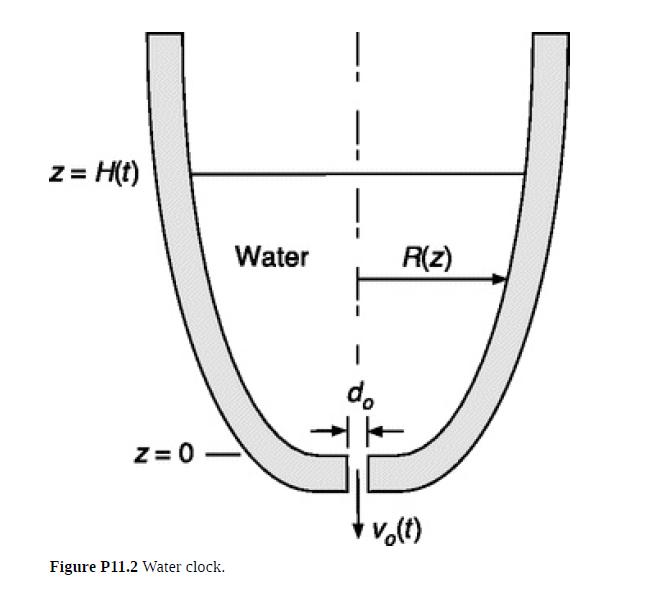Water clocks were used in Egypt and other parts of the ancient world to monitor the daily
Question:
Water clocks were used in Egypt and other parts of the ancient world to monitor the daily passage of time. In the version shown in Fig. P11.2 an open container of varying radius R(z) drains through a small opening of diameter do in its bottom. The mean velocity at the opening is vo(t) and the water level is H(t). If the dimensions are just right, dH/dt will be constant. With each hour yielding the same decrease in H, a linear scale can be used to tell the time. You are asked to design such a clock.
(a) Use conservation of mass to relate dH⁄dt to vo, do, and R(H).
(b) Assume that vo follows Torricelli's law [Eq. (P11.1-1)] and let C = |dH/dt| be the rate of change in the water level. Identify the function R(z) that will make C constant.

(c) Express the initial water volume V0 as a function of do, C, and the initial height H0.
(d) As will be apparent in part (e), the clock should not be allowed to drain completely. Let Hf be the water level after operation for a time tf. For a 12- hour clock that would fit in a room, choose reasonable values for H0 – Hf and thus C.
(e) For Torricelli's law to apply, at all times the flow must be turbulent and surface tension must be negligible. To complete your design, choose values of Hf and do that meet those requirements. Are the resulting values of V0, Rmax[= R(H0)], and Rmin[= R(Hf)] reasonable? If not, revise your choices for the water heights and outlet diameter.
Step by Step Answer:

Introduction To Chemical Engineering Fluid Mechanics
ISBN: 9781107123779
1st Edition
Authors: William M. Deen





